 St Mary's Church, Dymock
St Mary's Church, Dymock
| Admin | |||
| . | Home | Contents | |
| H&S Policy | People Safety | Grave Yard | |
The Church & The World
Faith & Care
Faith & Care
Things Past
People & Features
People & Features
The 'Anglican Communion'
Part of the World-Wide Church
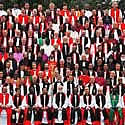
|
The head bishop of each, known as the 'Primate', and all its other bishops come together every 10 years in the 'Lambeth Conference' for mutual support and discussion, which may include discussing the essential doctrines. The Conference is called and hosted by the primate of the Church of England, the Archbishop of Canterbury. The Anglican Church is the world's 3rd largest Christian church after the Roman Catholic and Orthodox Churches. (Return to top)
| Lambeth Conference (Advice & Support) |
The Church of England (C of E)

UK Parliament
|
The Church of England is the official church of the land (England only) so is termed the 'Established Church'. Consequently its head is the reigning monarch and many of its rules are debated and agreed by the UK parliament and become part of English law. Major changes, such as the amalgamation of parishes and appointment of senior officers, including some priests and all bishops, have to be approved by the monarch, which is done through the 'Privy Council' a UK committee that advises the monarch on political and religious matters. (Return to top)
| Privy Council (Mainly Advice & Support) |
UK Parliament (Legal Functions) |
Provinces of Canterbury & York

Archbishops
Justin & Steven
|
The Archbishop of Canterbury is automatically the top bishop or 'Primate' in the Church of England. The Right Rev'd Justin Welby currently holds that post. He was installed in March 2013. Before that the head of the C of E was The Right Rev'd Rowan Williams who reached the age to retire, unlike the head of the Roman Catholic Church (known as 'The Pope') who usually stays in office until he dies. The Right Reverend Christopher Cottrell was appointed to York in 2020 to replace the previous holder, the Rt Rev John Sentamu who, having reached the required age, had retired.
(Note: There is only one Archbishops' Council, which serves both Archbishops) (Return to Top)
| Archbishop's Council | General Synod* |
Diocese
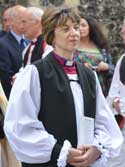
Bishop of
Gloucester
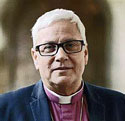
Bishop of
Tewksbury
|
| Bishops' Council | Diocesan Synod* |
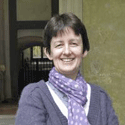
Archdeacon
of Gloucester
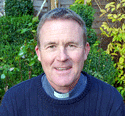 Archdeacon
Archdeaconof Cheltenham
|
The Archdeacon has powers delegated by the Diocesan Bishop to provide oversight of the parishes, to ensure the parishes are adhering to the various church regulations and that they are properly maintaining their buildings, worship and care of the people in their area. The Archdeacon also acts as 'Personnel manager' for the priests in their Archdeaconry. (Return to Top)
Deanery
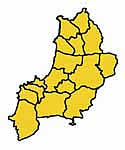
Typical group
of Parishes
|
2. The Deanery provides fellowship and support for its members, offering them any assistance it's in a position to provide, especially if there should be a dispute in or between parishes and during a 'Vacancy' (change of Minster). Ideally a Deanery should enable expertise & experience to be shared between its member parishes.
3. Through the deanery's links with, and knowledge of its member parishes, the diocese gains information to enable it to fairly share the costs of the diocesan budget and resources. (Return to Top)
| Deanery Chapter | Deanery Synod* |
Parish (Benefice)

Typical small
Parish Church
|
| Parish or Benefice Team | Parochial Church Council (PCC) |
Key
* 'Synod' is a Greek term and means 'together way'
The coloured boxes mean:
The coloured boxes mean:
| Advice and Support | Legal Functions |